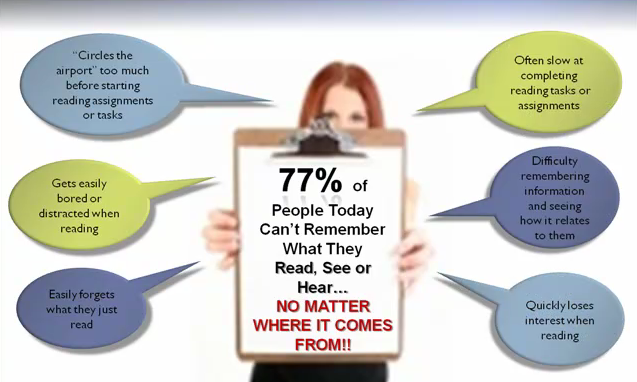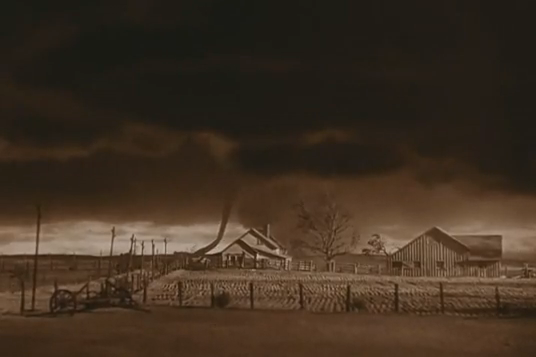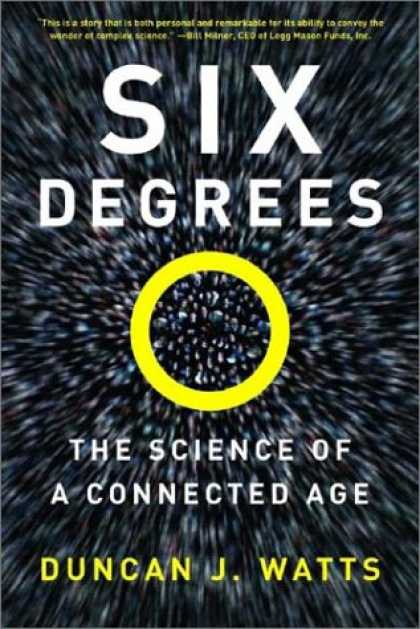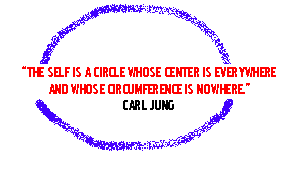18th Annual
Winter Chaos Conference
Dynamical Systems Thinking in Science, Education, the Humanities, and Society
March 19-21, 2010
Tarpon Springs, Florida, USA
The Tyranny of Temes
Dr. Mark R.Filippi
Abstract: After a decade or so of examining the neurobiology of the social brain from both a clinical and colloquial perspective, I decided to take a detour this year into the technical world of social media to look for ways it's impacted our behavior. What I found out was that all the chatter within the NDS community about 15 years ago about AI has now found it's home in the realm of temes - technological memes. WTF are these suckers? I turned to Susan Blackmore for help...
"Earth now has three replicators - genes (the basis of life), memes (the basis of human culture) and temes (the basis of technology). I argued that the information copied by books, phones, computers and the Internet is the beginning of this third replicator and consequent new evolutionary process. We already have plenty of temes. We are on the verge of having true teme machines, that is machines that carry out all three processes of copying, varying and selecting information without us. This new teme evolution is fast, and powerful and we would do well to try to understand it." http://www.susanblackmore.co.uk/memetics/temes.htm
Is social media an example of cultural evolution....or extinction?

Stats from AwareComm.com's presentation - http://is.gd/azgb1
"Conventional theories attribute the increase in human brain size to tool use, the acquisition of language, or other adaptations of benefit to human genes, but I have argued that it was meme driven and therefore potentially dangerous (Blackmore 1999). In other words, the acquisition of memes might have killed us off."

~~~~~~~~~~~~~~~~~~~~~~~~~~~~~~~~~~~~~~~~~~~~~~~~~~~~~~~~~~~~~~~~~~~~~~
Dangerous Replicators vs. Digital Intelligence
Susan Blackmore's Dystopia
"Who is out there in the rest of the cosmos? Are there lots of other cultures that have evolved in completely different ways from ours? Are there lots of civilisations potentially capable of communicating with us? Or are we all alone?"
"These questions have been asked often enough, but in trying to answer them most people have been searching for “extraterrestrial intelligence” and so, I suggest, have got the emphasis wrong from the start. From what I have said so far it will be clear that I want to put the emphasis elsewhere, on how replicators arise, and what happens when one kind of replicating entity builds on the products of the previous one. From this perspective, intelligence is a product of replicator power, not its precursor: it is not intelligence per se that forces a great leap forward in living creatures or creates the possibility of culture, but the appearance of a second level replicator. This second replicator creates an environment in which greater intelligence is adaptive. Intelligence therefore increases, helping to provide a situation in which a third level of replicator can arise."
Cosmic Math
"In 1961, the astrophysicist, Frank Drake came up with his famous equation for estimating the number of intelligent civilisations in our galaxy capable of communication with us (Drake and Sobel 1992). He never intended his equation to provide quick answers, but rather to stimulate discussion and to direct research towards the important factors involved. In the same spirit I would like to suggest a different equation. Like Drake's it describes the number of intelligent civilisations in our galaxy capable of communicating with us, but it begins with a guess at the number of planets in our galaxy, ignores intelligence, and concentrates on the appearance of replicators. This equation is
N = n x fR1 x fR2 x fR3 x L
where N = the number of intelligent civilisations in our galaxy capable of communicating with us
n = the number of planets in our galaxy
fR1 = the fraction of planets in n where a first level replicator survives
fR2 = the fraction of planets with R1 where a second level replicator survives
fR3 = the fraction of planets with R2 where a third level replicator survives
L = the fraction of a planet's life for which a third level replicator persists
We know far too little to make sensible guesses about the values of most of these fractions. Even so, the equation provides a useful structure for thinking about the possibilities. I guess that the emergence of each new level of replicator marks a danger point at which the new replicator may simply fail, may wipe out the next level down, or may wipe out all previous levels. If this is right we can now make some further guesses about what may be happening elsewhere."
 Culture As Residue
Culture As Residue
"Cultural evolution is a dangerous child for any species to let loose on its world. And the parent species, whatever it is like and wherever it arises, will have no insight into what it has done until its offspring is already grown and making its way in the world. By then it is too late to take it back. So I shall call this motherly species 'Pandoran', after the mythical first Greek woman whose box released all the evils of mankind. We humans are Earth's Pandorans, and have let loose cultural evolution, but on other planets quite different creatures might be playing this role....
"...if this danger point is passed, R2 can become established on its planet. To do this R2 must adapt to R1 and vice versa. In other words the two replicators must coevolve. This may be a kind of arms race with the R1 Pandorans striving to survive and multiply copies of R1, while R2 strives to transform the Pandorans into better machinery for multiplying R2. If the poor Pandorans are not wiped out by this process then they become simultaneously R1 machines and R2 machines (more specifically, they remain R1 vehicles while becoming R2 replicating machines). The information they copy one to another itself evolves and this is what we call culture."

Ben Goertzel's Metatopia
"The internet helps connect human minds together, allowing for vastly more efficient communication and information exchange than was possible before. Once AGI systems are built, might such networks facilitate the evolution of a distributed artificial consciousness?"
"You could have a mindplex formed solely out of software, which could emerge for instance from a bunch of separate Novamente systems collaborating very closely together and sharing mind-material, yet retaining their own separate goal systems. Or, you could have a mindplex formed from humans and AI systems interacting with each other frequently and deeply. What's interesting is the possibility that a higher level of awareness and intelligence emerges, which has us humans among its parts -- yet without forcing us humans into any kind of borg-like obedience or homogeneity. I think this is a very real possibility -- though I stress that it's not the most out-there and advanced possibility that a technological Singularity may bring us. In the end, an emergent global brain composed of humans is still a fairly primitive thing due to its reliance on humans."
Computer Math
A common problem with AI architecture is that there are typically many different learning algorithms written to handle the wide variety of cognitive processes, and they tend to "blow-up" when combined. You've used this fact to argue that whole AI systems should be designed, rather than separate components. Can you elaborate on this problem, and discuss your solution?
"Well, that's really a very technical question. It's hard to answer without going into an awful lot of detail. But Novamente does contain three key cognitive algorithms:
Probabilistic Logic Networks (PLN), which will be described in a book coming out in 2008 published by Springer. This is a logic engine that for the first time combines probability theory and formal logic in a systematic and coherent way.
MOSES, which synthesizes evolutionary theory and probability theory to enable very efficient learning of computer programs based on specifications. This started out as Moshe Look's PhD thesis (see metacog.org) but has already grown a fair bit
beyond there.
Economic attention allocation, a novel approach to deciding which pieces of knowledge and which procedures inside the Novamente system's mind deserve attention at any particular point in time.
And the point regarding integrative design and combinatorial explosion is that each of these algorithms, on itself,
A) would in principle be enough to lead to a thinking machine.
B) in practice, given a realistic amount of computational resources, would never be adequate to lead to a thinking machine, because as you feed them more and more complex problems, the amount of resources they use would scale up exponentially. This is called a combinatorial explosion, because as problems get more complex, the number of combinations of factors involved in them gets bigger exponentially....
The Novamente design explains how each of these three cognitive algorithms can help each other out -- basically delegating subproblems to each other -- in such a way as to avoid this kind of combinatorial explosion except for very, very large and complex problems. But to go deeper in this would require a lot of AI details. For example, MOSES helps PLN by enabling very efficient inference tree pruning. MOSES helps PLN by enabling it to carry out probabilistic modeling of evolving populations using background knowledge derived from long-term memory, etc..."
Culture As Obstacle
"....human beings are incredibly held-back and tied-down by the cultural preconceptions that are pounded into their heads from childhood. Yes, culture is what makes us what we are -- without culture, each of us would be little more than a monkey -- but it also holds us back from manifesting the potential it has given us. Something like creating a thinking machine is outrageous from the perspective of mainstream culture -- and yet, using the technological, analytical and conceptual tools provided by human culture, it could have been done a decade or two ago if anyone had managed to marshall the resources together in pursuit of the right AGI design.
Kurzweil says the Singularity will come in 2045 --- some say sooner, some say later, some say never. But the point I want to make is that the date is really determined by cultural psychology, not by technology per se. We could have a Singularity in 5-10 years if we wanted one badly enough. Or we could delay it forever if we collectively get lazy and don't really try.
Meanwhile Back In Kansas...

Social Media? "It's a Twister! It's a Twister!"

"... the real success goes to those who obsess. The focus that leads you through the Dip to the other side is rewarded by a marketplace in search of the best in the world. A woodpecker can tap twenty times on a thousand trees and get nowhere, but stay busy. Or he can tap twenty-thousand times on one tree and get dinner." - Seth Godin (link)
"There is no such thing as an egalitarian network...Randomness is like a child, filling in the blanks haphazardly, while Chaos is like a felon robbing a few banks and then retreating to the relative tranquility of his hideout only to return, get drunk and break some windows."
Greg Satell, Digital Tonto
Complexity Math
Through understanding the forces that drive social networks, we can take some practical steps to improve Social Media performance.
Communities are primary: A network is only as strong as the communities that it contains. A big mistake that many Social Media efforts make is to pursue broad coverage early on. Building enthusiastic, devoted communities requires a local approach (either geographically or in social space). Those local communities have 'weak ties' to other communities in other places, even faraway places. So you really can think globally by acting locally.
People want to connect: Connections between communities naturally grow over time for the same reasons that information wants to be free and dictatorships are expensive to maintain. Any opportunity to implement open architecture (while maintaining security protocols for the site core) should be seized upon. Walling off a social network is choosing the path to obscurity (although hardly the one less traveled).
Large clusters drive the network: A small number of extremely active members drive network growth. Mostly, they are driven by reputation and attention so it is crucial to give users every opportunity to be recognized by their peers.
Social Media isn't 'successful' until it is: A network doesn't grow in a linear fashion and it doesn't grow in just one direction, but two: outward and inward. Watts described a network maturing as an �instantaneous phase transition� similar to a crystal forming. The process moves relatively slowly and then, suddenly, a new global state is achieved. Once a �Small World Network� has formed, the growth becomes exponential. (link to article)
 Culture as Network
Culture as Network
While the complexity of chaos can be daunting, understanding the chaotic nature of networks is critical to understanding what drives them.
Recognition is the primary growth driver for Social Networks: Allowing people to be recognized is not only a primary driver within the network, but also for growth of the network. The 'giants' in the short head and the masses in the long tail are mutually reinforcing. Many social networks fail because they don't do enough to encourage people to promote themselves. There is no such thing as an egalitarian network.
Growth favors Giants: Because networks are scaled, new members benefit the most connected ones disproportionately. This insight should put the bias against 'newbies' in MMO games into a new light. Only weak players are diminished by new entrants. Strong players benefit.
Social Networks are Local and Global: Like Mandelbrot Sets, Social Networks are fractal. The patterns repeat. In effect, the Long Tail is made up of Long Tails, each guided by the same Power Law equation on a different scale. There is no reason for Social networks to dilute as they grow if they maintain local cohesiveness.
Professionals depend on Amateurs: While professional media people tend to be derisive of amateurs, in a networked world they depend on them. In effect, large media operations depend on the very bloggers and twitters that they love to hate (and vice versa).
In the same way that politicians depend on voters and corporations depend on consumers, media organizations today have to recruit and organize their audiences, not just broadcast to them. A mutual respect needs to form for both to use the network effectively.
We still have a lot to learn about Chaos and even the little we do know is far more than I can do justice here. However, one thing is clear: Social Media is no fad. It will continue to grow, surprise, delight and even sometimes horrify us." (link)
~~~~~~~~~~~~~~~~~~~~~~~~~~~~~~~~~~~~~~~~~~~~~~~~~~~~~~~~~~~~~~~~~~~~~~~~~~~~~~~~~~~~~~~
Sentience: the ability to feel or perceive subjectively 'the readiness to perceive sensations; elementary or undifferentiated consciousness'.
The Welts & The Spheres
R1 R2 R2 R3
[Gene Vehicles/Meme Machines] [Meme Vehicles/Teme Machines]
Coherence Math
"There is an emerging understanding that heart rate variability amplitude is a key indicator of health status, adequate amplitude
being indicative of sound health and inadequate amplitude being indicative of health risk. Furthermore, HRV "coherence" is emerging as a key indicator of autonomic nervous system balance, this balance or lack thereof manifesting in overall emotional and physiological health - coherence being strongly indicative of psychological/physiological harmony and incoherence being equally indicative of its opposite. Accordingly, it is desirable to achieve and maintain autonomic nervous system balance
![[jacket image]](https://www.press.uchicago.edu/Images/Chicago/0226403181.jpeg) Culture As (Meme) Field
Culture As (Meme) Field
"Virtual Adjustment: When 'cotentive' capacity is combined with 'ditentive' ability a phylobiological level
of 'attention' is achieved. This represents a holographic embodiment of coherence. It is theorized by the
author that by resolving the dilemma of self-reference, we can expand our access to autopoiesis
to a non-local level and allow the process of autosuggestion to sort for memes that increase
"Our bodily experiences or doyles are idiosyncratic, dependent upon the set of experiences we undergo in our culture before we reach the age of five and the storage of doyles cease. But given that in a given culture individuals are subjected to very similar experiences before five, we all have common bodily experiences upon which to base our understanding and meanings. Once we reach five-years-old, each time we attempt
to communicate or make sense of another's communication, the images, tones, gestures, and
words of their communication to us trigger pre-five-year-old doyles which enable us to
~~~~~~~~~~~~~~~~~~~~~~~~~~~~~~~~~~~~~~~~~~~~~~~~~~~~~~~~~~~~~~~~~~~~~~~~~~~~~~~~~~~~~~~~~~~~~~~~
Shelf Similarity? Meet the Teme Machines...
Eric Qualman re-posted this recently on socialnomics.com (full article)
- 2.7 hours per day on the mobile web
-
- 91% use the mobile web to socialize vs 79% of desktop users
- 45% post comments on social networks
- 43% are connecting with friends on social networks
- 40% share content
- 38% share photos
~~~~~~~~~~~~~~~~~~~~~~~~~~~~~~~~~~~~~~~~~~~~~~~~~~~~~~~~~~~~~
OK, Final Answers...(Sure they are) ;)
Memetic Solution - If we build it, they will run (us)...
"...the direction of cultural evolution will depend on the kind of species in which that culture first emerged, how much scope there is for transforming that species into an efficient R2 machine, whether the species has limbs suitable for constructing rich material culture, and what material resources there are available for such construction. The general principle will apply throughout that replicators of high fidelity, fecundity and longevity will prevail. This is likely to result in such innovations as communication systems, behavioural traditions, education, symbolic culture, tools and buildings. As the culture
goes on evolving it may produce analogues of writing (because it increases longevity), long range communications systems (because they increase fecundity) and digitisation of information (because it increases fidelity). Gradually these may, depending on conditions, create signals detectable far from the home planet itself, but this only becomes a serious possibility once the way is already paved for the emergence of a third level replicator."
Susan Blackmore
AGI/AI Solution - Transcend the Human Brain's Illusions
"I Me Mine is the ego problem. There are two 'I's: the little 'i' when people say 'I am this'; and the big 'I'
- ie duality and ego. There is nothing that isn't part of the complete whole.. When the little 'i' merges into
the big 'I' then you are really smiling!"
George Harrison
NDS Solution - Turn off, tune out, drop within
"The I is linear; the Me is nonlinear. The social domain, tends to be linear, unalloyed chatter. The personal domain, the domain of sensory perception, is more able to preserve the nonlinear. Art seeks
out the nonlinear; science the linear. The computer demolishes the difference, because it gives consciousness the ability to convert large quantities of information by machine."
Tor Norretranders, "The User Illusion"
Somatic Solution - Get Your Priorities Innate!
"The frontal lobes are the brain's disciplinarian. They hold the reins on the other parts the brain,
which otherwise would meander in their activity, always following the direction of least resistance,
always tending toward habit. When we daydream, we free-associate while our frontal lobes slumber.
But when we work, the frontal lobes constantly rein in parts of our minds to stop them from
wandering off from the task at hand. When we hold the image of a guitar in our imaginations, the image is constructed in visual cortex, but sustained by frontal cortex, which prevents it from fading away.
Similarly, it is frontal cortex acting on auditory cortex that lets us hold musical anticipations for many seconds as we await their resolution. There is no point in possessing the marvelous resolving power of our visual and auditory cortex, the vast categorization abilities of our temporal lobes, or the
astonishing analytical skill of our parietal lobes, if these mechanisms are applied to trivial ends.
A nervous system must always be on the lookout for the most important activities to
which to devote itself. This is the ultimate purpose of emotion."
Robert Jourdain, "Music, the Brain and Ecstasy"
So what's the payoff of temetic awareness for us?
There's already a shift from local to glocal networks and vertical to virtual markets...

One industry report cited that processing claims is the second biggest area of wasteful
expenditure in the health care system, costing as much as $210 billion annually.
Prevention better than cure: MDVIP, based in Boca Raton, Fla., is one of the largest organizations of
primary care physicians, numbering about 326 nationwide, that practice retainer-based medicine.
"We call it preventive, personalized health care," said Darin Engelhardt, president of MDVIP.
"Our premise is if we reconstruct primary care, what would it look like?'"
(link to rest of article)

post conference note: Notice how all four perspectives are pointing back to a form of 'oneness' whether it's Susan's temetic apocalypse, Ben's accelerated Singularity, Seth and Greg's winner take all social marketing or the somatic concepts of coherence and cotention. So rather than moving further out into chaos and the soupy realm of the strange attractor, temes are driving us to a stagnating fixed point - where the self is literally surrounded. Only somatics, a 1st person science, offers us a strategy to use our sentience to regulate the memes we adopt & advance, which includes of course the temes we embolden.
Click here to add a comment or question
~~~~~~~~~~~~~~~~~~~~~~~~~~~~~~~~~~~~~~~~~~~
Visit The 2010 Winter Chaos Home Page
~~~~~~~~~~~~~~~~~~~~~~~~~~~~~~~~~~~~~~~~~~~~~~~~~~~~~~~~~~~~~~~~~~~~~~~~~~~~~~~~~~~~~~~~~~
"Rehumanize yourself, rehumanize yourself!"

~~~~~~~~~~~~~~~~~~~~~~~~~~~~~~~~~~~~~~~~~~~~~~~~~~~~~~~~~~~~~~~~~~~~~~~~~~~~~~~~~~~~~~~~~~
Travel Light Snowflakes! ")
~~~~~~~~~~~~~~~~~~~~~~~~~~~~~~~~~~~~~~~~~~~~~~~~~~~~~~~~~~~~~~~~~~~~~~~~~~~~~~~~~
Bonus Expercise
Welcome To Somatic Cinema
One of the easiest ways to learn how to shift from one domain or somatic
orientation to another is by watching a movie/video. Here’s the big cues to note…
EXO Phase
This occurs when your attention is on the physical atmosphere of the theater or living room you’re in. Pay attention to the contact you are making with the ground, the seat or couch you’re on. This is a great window to pose a question to yourself about why you are here, right now. Movies are a unique way to process emotions that we have trouble talking about with others and sometimes even ourselves. Often what we choose for our entertainment consists of the experiences we are lacking most now in our lives.
ONTO Phase
When you let go of the literal aspects of when, where and why you happen to be watching a movie and get into the internal dialogue that arises in you as the film unfolds you’re in this phase. Tune into your breathing, your energy levels, bodily tensions and how active your inner voice is as the movie progresses. Another feature of this phase is how hungry or thirsty you get. Do the snacks relax you or charge you up? Some people get very sensitive to their bladders in this phase. Can you hold it in now? now? NOW?
ECO Phase
OK, so now you’ve set aside the physical environment and your own physicality. When you are absorbed into the movie’s world you are entering this phase. Some movies get you going from the outset, like Jaws. Your task in this phase is to get very observant of how the shifts in light/dark, temperature, emotion and consciousness (dream sequences, flashbacks, foreshadowing etc…) impacts your attention.
PHYLO Phase
Finally we get to the characters in the story. In this phase all you are focusing on is the storyline. You’ll find yourself identifying with some of the characters and not others and feel the rise and fall of their arc throughout the movie. You’ll also have emotional reactions to their fate in the film, which is why so many people are turning to what’s call cinematherapy (see link below) for a new way to handle life’s drama. As the film concludes, notice how long the story lingers before you rise to leave or turn off the DVD. It’s a read on the degree and extent the film ‘moved’ you. Sometimes a great film will leave you in a state of total exhaustion, but it’s a ‘good tired’. When you return to everyday awareness this phase is over... (link to Cinematherapy site)